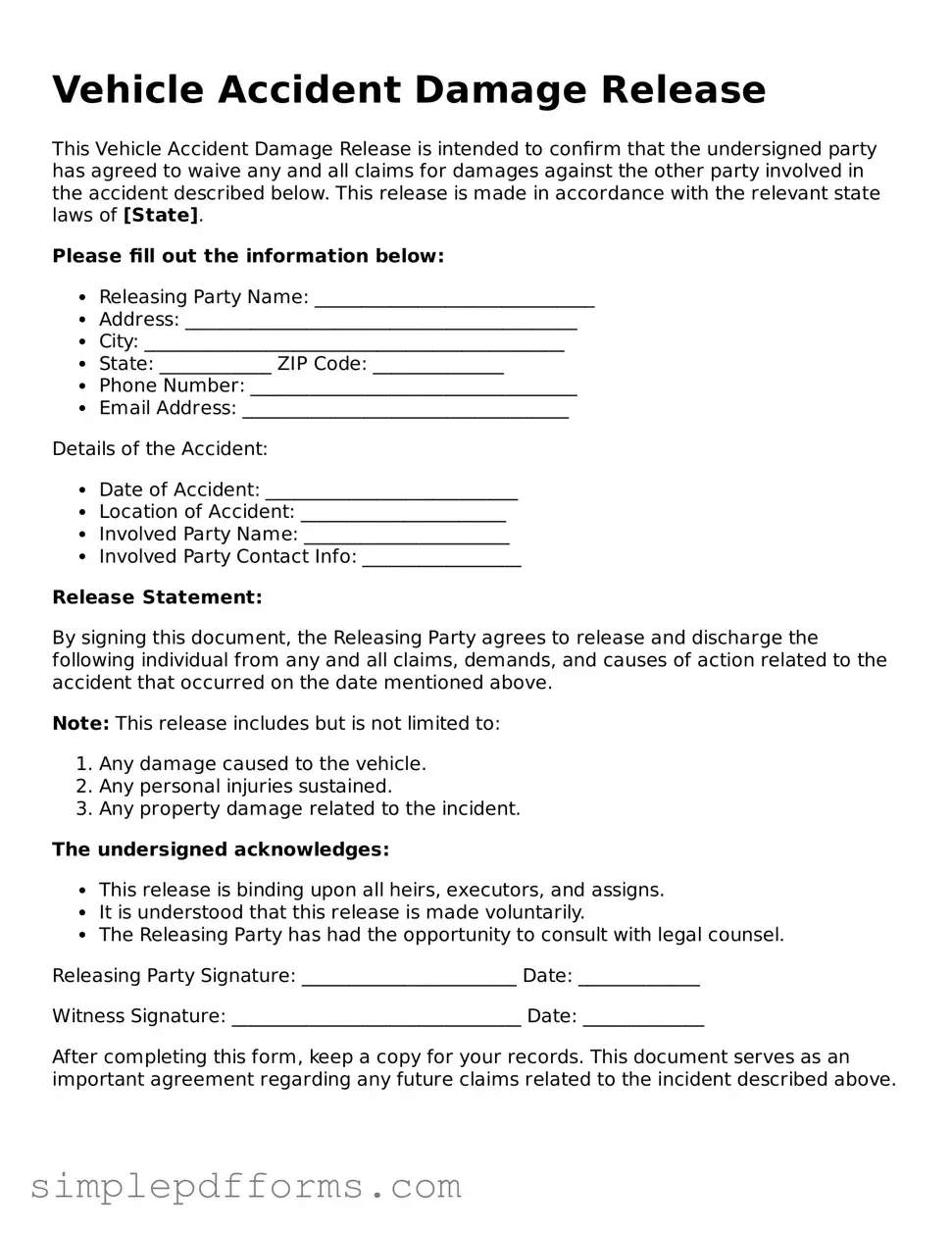Vehicle Accident Damage Release
This Vehicle Accident Damage Release is intended to confirm that the undersigned party has agreed to waive any and all claims for damages against the other party involved in the accident described below. This release is made in accordance with the relevant state laws of [State].
Please fill out the information below:
- Releasing Party Name: ______________________________
- Address: __________________________________________
- City: _____________________________________________
- State: ____________ ZIP Code: ______________
- Phone Number: ___________________________________
- Email Address: ___________________________________
Details of the Accident:
- Date of Accident: ___________________________
- Location of Accident: ______________________
- Involved Party Name: ______________________
- Involved Party Contact Info: _________________
Release Statement:
By signing this document, the Releasing Party agrees to release and discharge the following individual from any and all claims, demands, and causes of action related to the accident that occurred on the date mentioned above.
Note: This release includes but is not limited to:
- Any damage caused to the vehicle.
- Any personal injuries sustained.
- Any property damage related to the incident.
The undersigned acknowledges:
- This release is binding upon all heirs, executors, and assigns.
- It is understood that this release is made voluntarily.
- The Releasing Party has had the opportunity to consult with legal counsel.
Releasing Party Signature: _______________________ Date: _____________
Witness Signature: _______________________________ Date: _____________
After completing this form, keep a copy for your records. This document serves as an important agreement regarding any future claims related to the incident described above.
